A Beginner’s Guide to Running a Successful Brewery Instagram
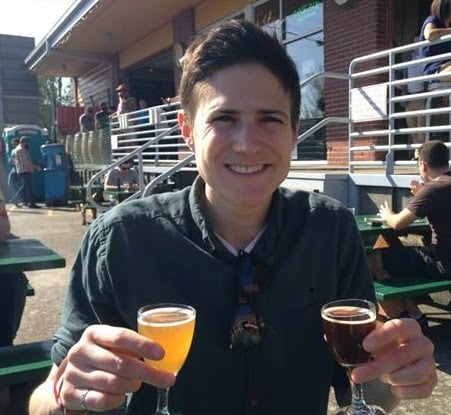
April 1, 2022
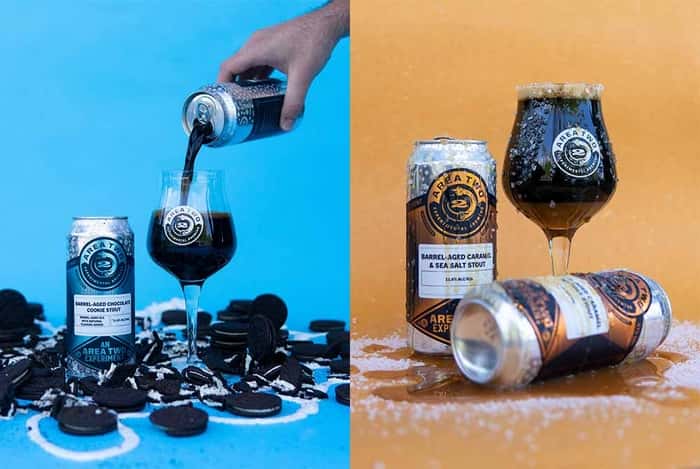
Over the last half decade, Instagram has become the social platform of the beer industry. Consumers have created their own craft beer subculture where top influencers have thrived. For breweries, posting gorgeous beer shots and announcing releases have become crucial to their marketing strategy.
With over 9,000 breweries around the country, it’s imperative to find a way to make your brewery, bar, or restaurant stand out. Cultivating a current, consistently updated Instagram profile is imperative to reach your target audience.
But where do you start?
For example, how many times a week should you post? What time should you post? What should you post? What about those “hashtags?” Should I hire a social media manager? And how about Instagram influencers? We’re breaking it all down and more to tap into what makes people double-tap.
Here is a beginner’s guide with all the basics to help you build a foundation for the best Instagram account for your business.
What We’ll Cover in This Piece:
- Why Do Beverage Businesses Need an Instagram Account?
- A Quick Instagram Glossary
- The First Step When Starting an Instagram
- Create an Instagram Handle and Write Your Bio
- What Are the 3 Most Important Metrics to Track?
- How Many Times Should You Post a Week?
- What Are the Best Times of Day to Post?
- The 3 Classic Types of Content to Post
- Our 3 Favorite Unique Types of Content to Post
- Four Examples of Successful Instagram Posts
- What Are Hashtags? And Why Should You Use Them?
- Beyond Posting, You Need to Engage with Your Community
- Should You Hire a Social Media Manager?
- What Are Instagram Influencers? And Should You Reach Out to Them?
- The Final Word on Instagram
Why Do Beverage Businesses Need an Instagram Account?
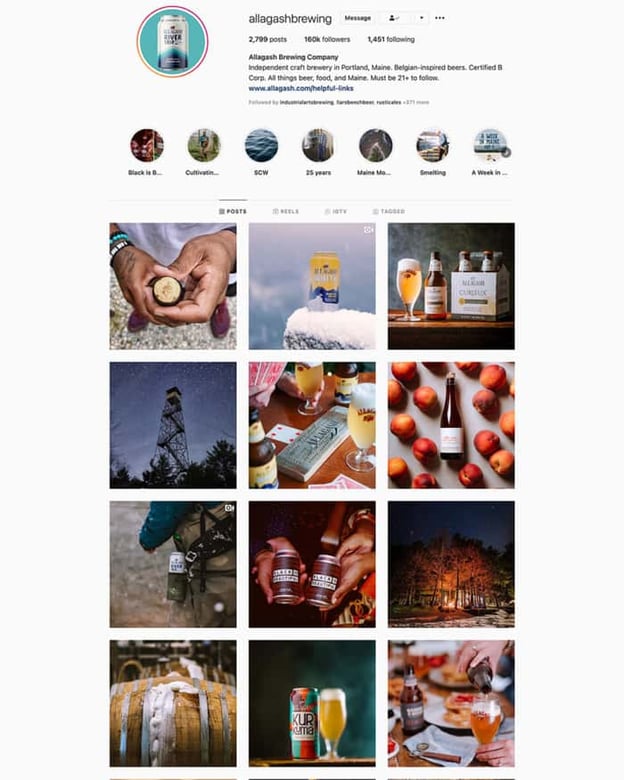
Instagram is the social media platform for craft beer fans. The visual channel allows consumers to learn what their favorite breweries are releasing next, what events are coming up, what merch they’re launching, who runs the brewery behind the scenes, or even different social issues they stand for.
Because Instagram is so visually focused, it’s an easy, bite-sized way to consume information.
In fact, according to Statista, as of January 2022, Instagram had roughly one billion monthly active users, thirty-percent of whom were aged between twenty-five to thirty-four years.
Just look at the Instagram followings of some of the most well-known craft breweries and apps:
- Allagash (@allagashbrewing - 166k followers)
- Other Half (@otherhalfnyc - 215k followers)
- New Belgium (@newbelgium - 309k followers)
- Firestone Walker (@firestonewalker -245k)
- Untappd (@untappd - 129k followers)
To put it simply, to compete in today’s craft beer industry, your business must have a presence on Instagram.
But don’t worry—if you’re new to the platform, creating a healthy, active account doesn’t have to be daunting. And even if you’re a seasoned pro, it can’t hurt to brush up on these essential tips.
A Quick Instagram Glossary

Here are some quick terms that will be helpful to know when it comes to Instagram.
Handle
This is your username. It’s the name that defines your Instagram profile.
Post
What you physically display on your page. This can be a photo or a video.
Stories
Posts at the top of your Instagram newsfeed that only last twenty-four hours.
Newsfeed
The stream of posts that appear on one’s Instagram home screen. It’s what folks scroll through to see all the recent posts of people and businesses they follow.
Hashtag
A word or phrase with the # symbol in front of it. This is a searchable tag that categorizes your posts.
Tag
Think of this like “tagging” in graffiti. When you “tag” someone on Instagram you are attaching their username to the post.
Influencer
Someone who has a lot of influence on Instagram, usually in a specific industry and most likely with a high number of followers and engagement.
The First Step When Starting an Instagram
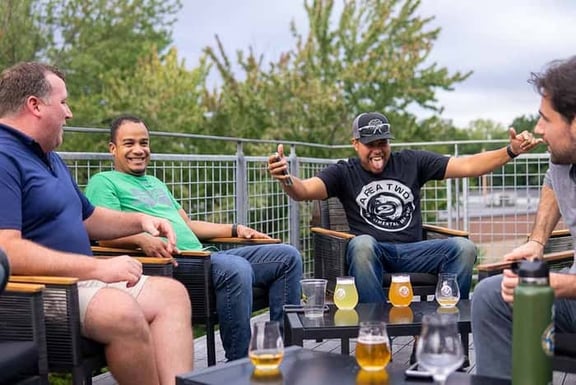
Before you actually create an account (or handle) on Instagram you need to do your homework and answer the question: Who is your audience?
What you find will determine the entire direction of your Instagram profile along with the type of content you create.
Do you reach Millennial-aged folks around the country? Or is your demographic a bit older and concentrated just in your own city? Understanding your target consumer will dictate every decision you make on Instagram.
When former Untappd Social Media Manager Molly Smith came to the app in the summer of 2021, her first move was to learn the audience. Smith spent three years building the social media account for MGM Springfield from scratch when it first opened in 2018. A completely different audience, Smith needed to find out more about the followers of @untappd.
“The first approach I took was to learn the audience and what they like,” says Smith. “I quickly realized…there was this pride they had in the Untappd brand.” Understanding the Untappd community, Smith could start building successful campaigns.
Similarly, when Kat Manning first joined Two Roads Brewing Company as the Social Media and Content Creator, her first step was to create a target audience profile.
“Think about potential job titles, their demographic, age—are they younger or older? Dating somebody? Living with a partner? Have children or a dog?” says Manning. “Think about what brands your target consumer is affiliated with… Figure out what their goals are, their pain points, and how your Instagram is there to help them.”
For example, at Two Roads their target audience affiliates with brands like REI, Subaru, Etsy, and L.L. Bean. It’s more of an outdoorsy group, so Manning tailors Two Roads’ content to reflect that adventuring spirit. “They are challenged by the need to go explore and get out and be active,” says Manning. “On Instagram we strive to show them the road less traveled and how fun our campus is or how cool and great our team is to get them to want to come to the brewery to meet us.”
According to Manning, some of Two Roads’ most successful content is not only about beer culture, but also about their brewery, highlighting their campus and team. All of which she discovered by developing a thorough audience profile.
Thinking about all of this helps direct your content and reach your target consumer, who ultimately buys your product.
Create an Instagram Handle and Write Your Bio
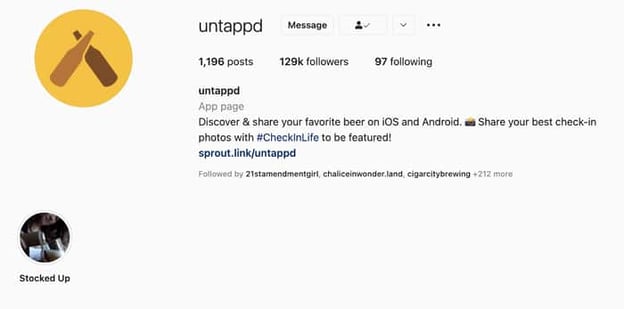
After you’ve developed a good portrait of your target consumer, the first step will be to set up your Instagram page, of course.
Your profile page on Instagram is referred to as your “handle.” It’s basically the name you’ll use to direct people to your page. It’s always preceded by an @ sign. For example, Untappd’s Instagram page is @untappd.
You want this name to be concise and to the point. This handle should be easily recognizable and relate directly to your brand.
If you’re new to the game, Instagram has a handy guide for you to follow here.
Similarly, your bio is the text under your username where you can give folks the quick elevator pitch about your business. This section is often the first thing people see when they visit your profile.
Again, keep it short and simple. Just pack it with the most important information about your brand.
What Are the 3 Most Important Metrics to Track?
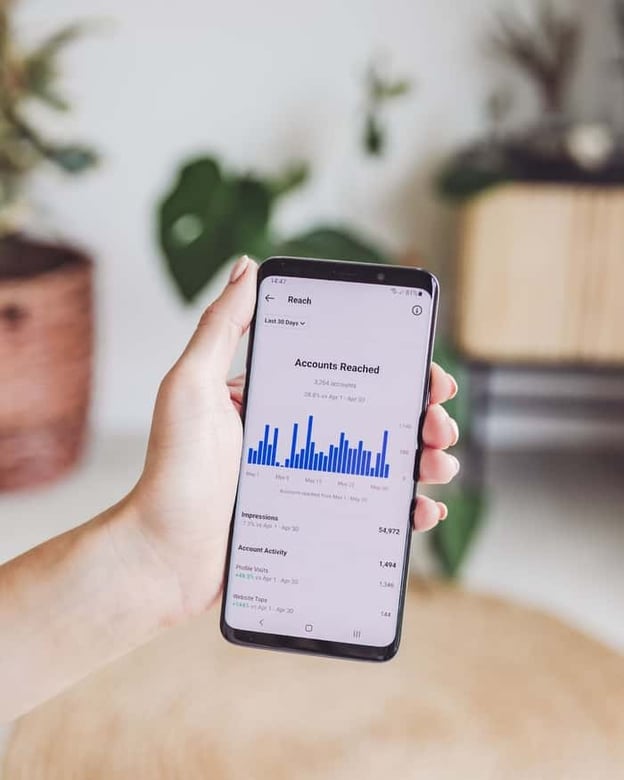
Next, set goals for yourself. You’ll want to develop a way to measure whether your Instagram page is successful.
There are a ton of metrics you can track on the app, but we recommend following these three at the very least.
Engagement Rate
This is the measure of how users interact with the content on your profile.
How to calculate: Add all of your likes and comments per post, divide by the number of your followers, and multiply by 100. It looks like this:
(Likes + comments per post)
––––––––––––––––––––––––– X 100
Total number of followers
Why it’s important: The engagement rate tells you how often people are interacting with your posts. This is important because it gives you an idea of how engaged your followers are. People that like and share your content aren’t just passersby gawking at a pretty photo; they’re interested enough to engage with your content, so the chances of them sharing or coming back to your profile are high.
What is a good engagement rate?: Yes, the magic question! Unfortunately, there isn’t one universally “good” engagement rate. Generally, on Instagram, engagement rates range from one percent to five percent. But, “good” engagement rates can vary by industry. According to one study from Influencer Marketing Hub, the alcohol industry averages an engagement rate of 1.17%. At a very basic level, you’re probably killing it if your engagement rate is between one to three percent, but anything between 0.80% and one percent should also be considered healthy.
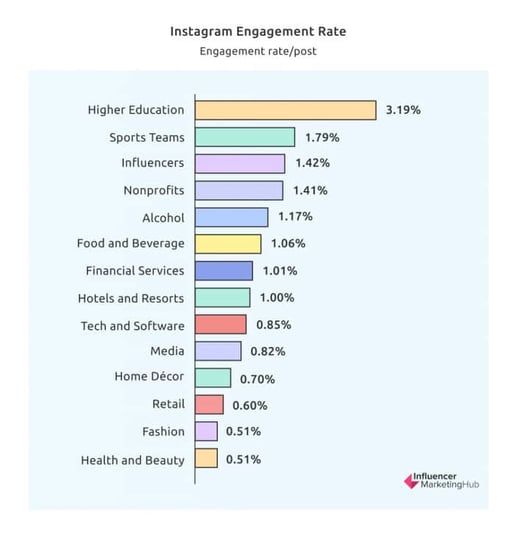
(Photography courtesy of Influencer Marketing Hub)
Impressions
This is the number of times Instagram shows your content to users. Often confused with reach, impressions are the total number of times viewers could have seen your content. On the other hand, reach measures the number of unique users who viewed your content.
How to calculate: Instagram calculates total impressions for up to thirty days. On your profile page, tap the “Insights” button at the top → “Accounts Reached” → scroll down to “Impressions.” To truly track the growth of your impressions over time, we recommend using a third-party social media management tool such as Sprout Social.
Why it’s important: Essentially the idea is that the more impressions you accumulate over time, the more consumers become familiar with your brand. And familiarity with your beers and brewery means it’s more likely someone will purchase your product. Or at the very least, continue to follow, share, and like your content.
Audience Growth
This is a measure of how many folks follow you.
How to calculate: You can find this number right at the top of your Instagram page.
Why it’s important: Grow your audience and you grow how far and wide your posts reach. Plus, that’s more people that can potentially share your content with new folks, who might then follow you. Think of this as a snowball effect. Essentially, your content will reach more eyes the larger your following.
A word of caution: Audience growth can be a little tricky. Some people might follow you just because they saw one post they liked, but then never like a post again. What you’re really looking for is quality of followers over quantity. Those who are engaged with your post, liking, sharing, and saving on a consistent basis are the key. For that reason, we recommend that you put more weight into your engagement rate. But growing your audience is certainly still important.
At Two Roads, Manning develops a report every three months to keep track of the brewery’s growth, engagement rate, and more.
So far, the progress has been very positive. Since joining the team eight months ago, Manning has helped double Two Roads’ engagement rate.
“If you track and can see growing numbers…it will be a big confidence booster for you,” says Manning. “It’s something you can hang your hat on.”
To track your analytics, it’s best to use a platform. Manning likes Onlyput, but Hootsuite and Sprout Social are good options, too.
How Many Times Should You Post a Week?
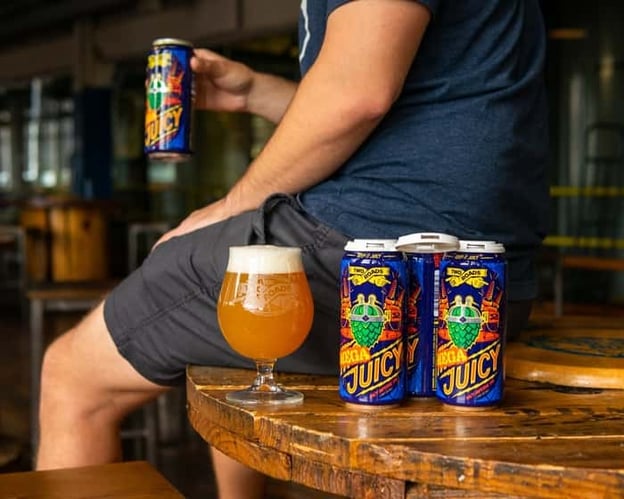
You have an Instagram page, you understand your audience, and you’ve set your goals. Now it’s time to start posting!
One of the most common questions is how many times should I post per week?
“If you can post every day…do it,” says Manning. “If you can’t, post at least five times a week.”
Instagram is a 24/7, 365-days-out-of-the-year business. People are constantly tuning in to the platform, so the more you can make your presence known, the more chances you have for touchpoints with your consumers.
“Social media isn’t something you can schedule and forget about,” says Smith. “You have to pay attention to what’s coming down the pipeline or prioritize when something pops up and needs to be posted right now.” At Untappd, Smith posted at least five times a week.
Having said that, you don’t want to overdo it either. “There is a balance,” says Smith. “Of course, you want to be seen, you want to make sure you come across people’s feeds as they’re scrolling; however, you don’t want to be overbearing.” That approach can come off as inauthentic.
Bottom line: Find a balance that works for your business. Post at least once a day if you can. And if not, shoot for five days a week.
What Are the Best Times of Day to Post?
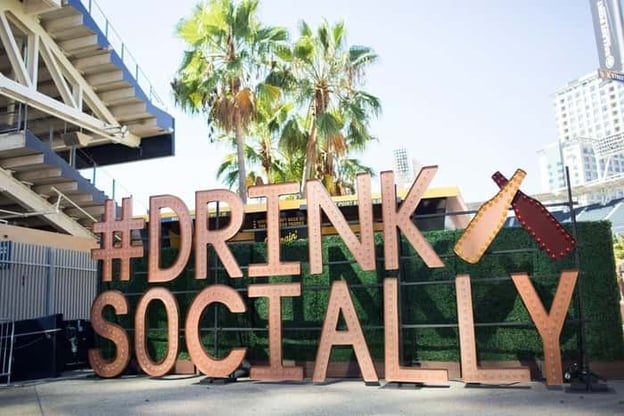
Piggybacking off the previous question, timing is crucial to the success of your post.
This will vary by business and your specific demographic.
But generally, Manning likes to post “around meal times or wake-up and go-to-bed times,” she says. “I know on my lunch break I’m eating a sandwich and scrolling through Instagram or when I go to bed I’m probably scrolling through Instagram for an hour. It’s the same when I wake up and don’t want to get up; I sit there for twenty minutes on the phone.”
Manning encourages business owners to think about their consumers’ habits and how they spend their day.
“On the weekend I wouldn’t post late nights because people are out and socializing, but Monday through Friday 9pm and 8pm are nice, also 7am when they’re eating breakfast, 1pm when they’re doing lunch, and 6pm when they’re eating dinner.”
The 3 Classic Types of Content to Post
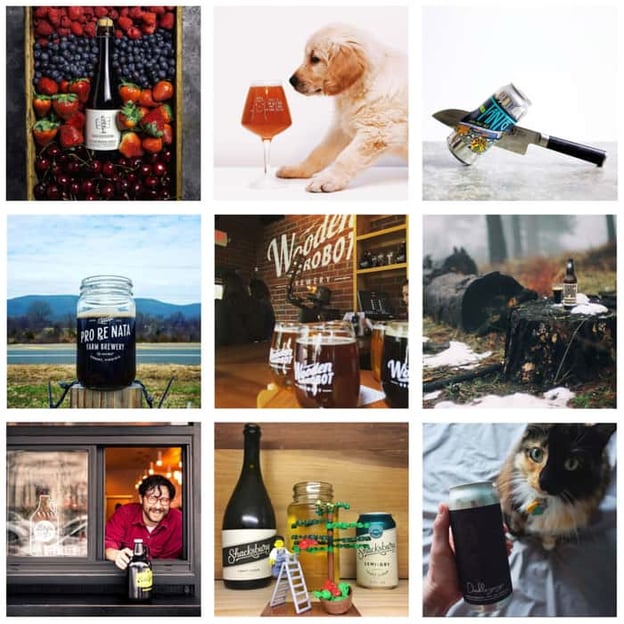
There are many different directions you can go with the types of content you post. The most important takeaway here is to mix it up while sticking to what rings true to your establishment
“Keep it entertaining, keep it unique, and keep to the voice of your brand,” says Smith.
Manning says she consistently changes the focus of her posts, whether it’s a brewer behind the scenes, a beer pour shot, or a bunch of people hanging around by the fire drinking a beer.
“It’s that fear of missing out,” says Manning. “People want to see other people having fun.”
According to Manning, this is the ideal scenario: Three people sitting in a triangle talking and having a beer. She’ll stroll the parameter, getting pictures of people in the foreground and background.
“You can have some people pour beer while others drink it out of the can so you get the color of the beer and the can in the shot. It’s a scene where they’re not just sitting alone, but in a community,” says Manning.
Why would you want to only portray a small slice of your drinking community? Find a way to include people of all backgrounds and cultures across your Instagram.
These are the three classic types of posts:
Static Post
One straight up picture that you post to your Instagram page.
Video Post
A video posted to your Instagram page.
Carousel Post
A post featuring multiple photos or videos that users can see by swiping left.
Our 3 Favorite Unique Types of Content to Post
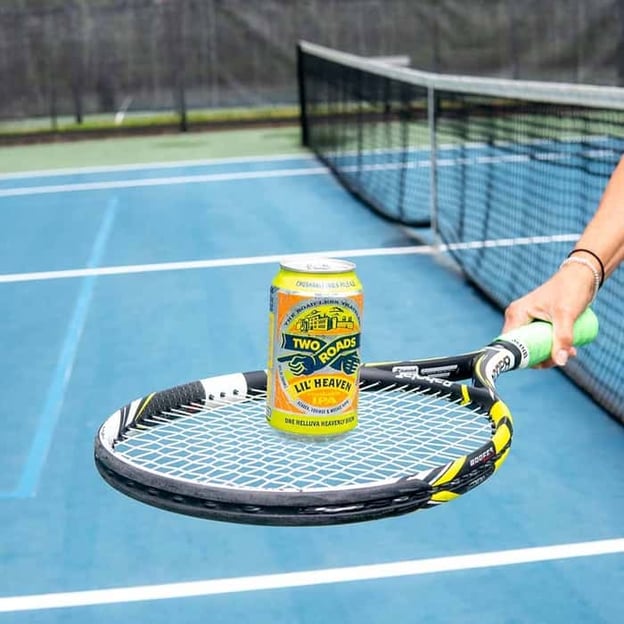
To stand out, try one of our three favorite unique types of content to post in the beer and alcohol space.
Snazzy Static Can or Pour Post
This is just a regular photo that you post to Instagram showcasing a pour or can of one of your beers. It’s one of (if not the) most common practices for breweries in the industry. To differentiate yourself, Manning recommends snazzing up your shots. “Show the can on a tennis court or bring the beer into your daily life instead of just having it sit on a table,” she says. Alternatively, play around with the ingredients. On Area Two’s Instagram, one of their most popular posts featured their Barrel-Aged Chocolate Cookie Stout staged with whip cream and cookies or the Barrel-Aged Caramel & Sea Salt Stout in a puddle of caramel. Those extra touches catch the eye and make people double-tap.

Behind-the-Scenes Video or Post
Give your fans a sneak peek into your brewery. This will humanize your brand and show your fans who you are. “It’s not so much about sell, sell, sell,” says Smith. “That doesn’t really resonate with people.” Smith says if she’s scrolling on Instagram and sees something that looks like an ad she might want to keep scrolling. Instead, “Speaking to the people and sharing what they want to see is more important,” says Smith. “Because when it comes down to it, the Instagram page is for a community to share their opinions and voice what they want to see.”
Manning agrees, “One way to build community…to make people want to buy your beer and support you is to showcase the people who work there,” says Manning. “Showing you’re fun and that you love your community…is equally as important as showcasing beer and a pour shot because people want to support people they like, and the more you show you love your people the more people will show their love back to you.”
IG Reels
For those who don’t know, Instagram Reels is the social platform’s answer to the uber-popular TikTok. On Reels, you create fifteen- to thirty-second videos that can be about literally anything. It could be a serious tour of the brewery or something goofy like putting your face on a beer and making it talk to you in your refrigerator. “Our most successful content is IG Reels that are generally about beer culture, but also about our brewery highlighting our campus and our team,” says Manning.
Four Examples of Successful Instagram Posts
Two Roads’ On My Way To Get Beer-2-Go Knowing I Have a Full Fridge at Home Video
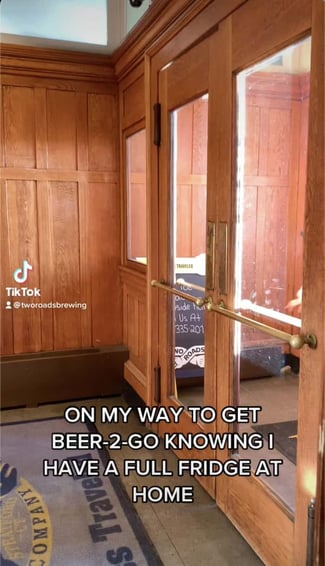
Why did it perform well?: This video performed really well for Two Roads. It’s super simple: just someone going to the brewery to grab some beer knowing that their refrigerator is full at home. “People in the craft beer world can relate to that,” says Manning. “I need to go to the latest brewery to get as much beer as I can and I’m so excited to be here even though I don’t need beer because I have a fridge at home full of beer.”
Two Roads’ Road Jam Video
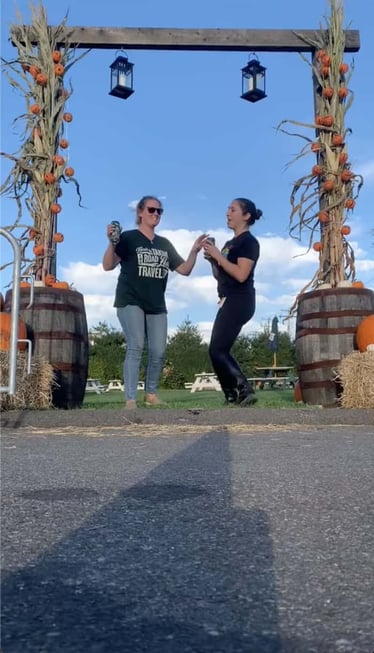
Why did it perform well?: Manning posted this video to promote Two Roads’ Road Jam music festival featuring Ripe. She videoed people from all over the brewery dancing to one of Ripe’s songs. “In that post, we brought in people from the packaging line, warehouse, accounting department, logistics, and engineers all into one video,” says Manning. “It pointed to the community aspect of social media and creating light-hearted, fun places to bring people together virtually.” This post performed well because it gave people a behind-the-scenes look at the entire Two Roads team while doing something silly and fun.
Untappd #CheckInLife Post

Why did it perform well?: Two reasons. First, this post is a visually pleasing photo featuring a beer from a very popular brewery (Tree House) in a unique way. Second, this post is considered User-Generated Content (UGC). Essentially, instead of creating the content yourself, you leverage content created by other people. This can be an advantage because it pulls in other communities to view your content. This post was a part of Untappd’s #CheckInLife Highlight campaign that features other photos posted by the Untappd community. Untappd does a great job of cultivating its community. It the app’s bio, they write: “📸 Share your best check-in photos with #CheckInLife to be featured!”
Untappd Charlotte Festival Announcement Post
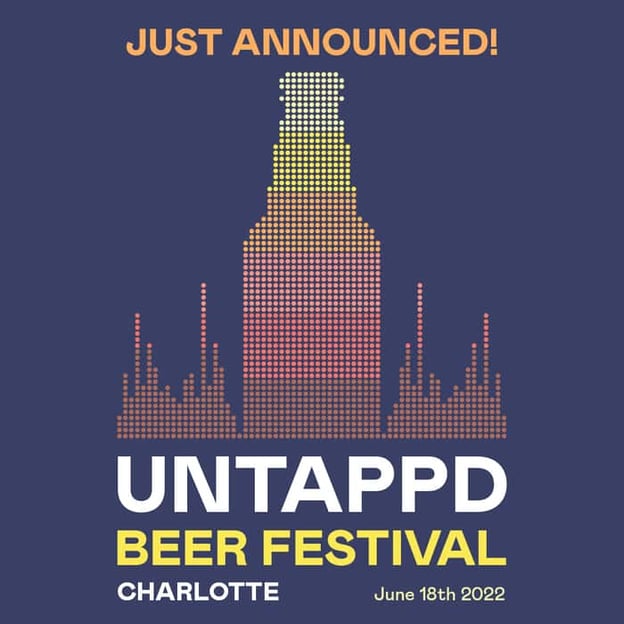
Why did it perform well?: Instagram is a great platform to announce events. The post hit over 1,100 likes after Untappd announced its new beer festival in Charlotte. People are excited about the new event and showing their love by liking this post.
What Are Hashtags? And Why Should You Use Them?
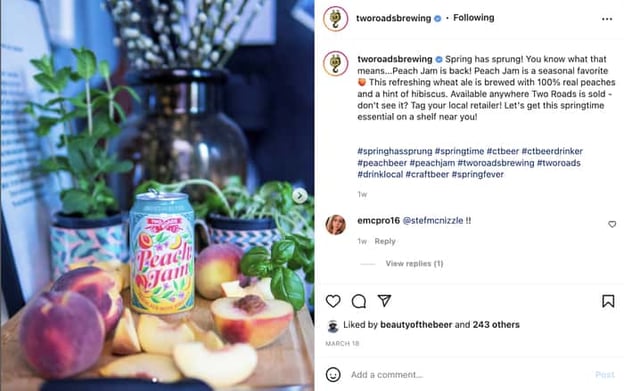
Hashtags are a word or phrase with the # symbol in front of it. They are searchable tags that categorize your posts. You can add them to the end of your post and basically file your post somewhere. People can then search for topics they like under that hashtag.
For example, for Two Roads’ recently released mango hemp IPA, Manning says she might add hashtags such as: #areatwoexperimentalbrewing, #areatwo, #tworoads, #tworoadsbrewing, #hempIPA, #hemp, #infusedbeers, #infusedfood, #mauiwowee (because that’s the hemp strain used in the beer), or something fun and popular about pot like #stonerbeer.
“Anyone who has interest in that topic will be more likely to see your post if you use hashtags relevant to those experiences and interests,” says Manning.
You’re allowed up to thirty hashtags, so use them wisely to target specific interest groups who might connect with your post.
Beyond Posting, You Need to Engage with Your Community
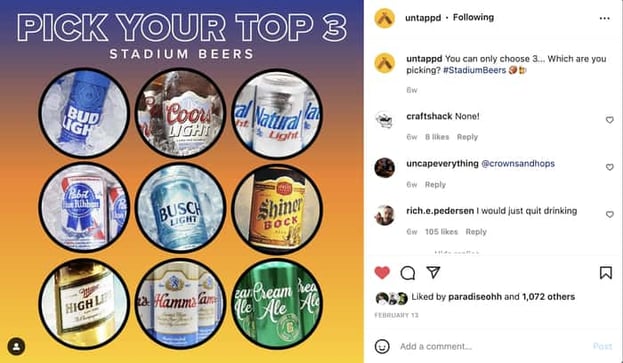
(Photography courtesy of Untappd)
Remember when we said that Instagram is a 24/7, 365-days-out-of-the-year business? Engaging with your community is crucial to building your platform.
This means you should respond to comments and questions on your posts, like posts of other breweries or influencers you like, and just generally keep an active presence in the community.
All the time.
“I would be on your phone twenty minutes after the post goes out to like peoples’ comments and respond to them,” says Manning. “The faster you answer those and start a conversation in the comments the more people will see your post and your post will become more important.”
Instagram recently changed its algorithm to place more of an emphasis on how your posts relate to the consumer. As opposed to ranking posts based on how many likes it reaches, now Instagram is more about friendship and developing relationships between the consumer and the brand.
The more active you are in the community, the more people will see your posts in their feed.
Should You Hire a Social Media Manager?

With all the consistent work required to run an Instagram account, you should consider hiring a social media manager.
This person can handle the day-to-day logistics of maintaining your Instagram handle, be present to engage with the community, and perhaps most importantly really get to know and understand your business.
“Having someone available on campus is huge,” says Manning. “It’s very important to have someone at the brewery every single day who knows which hops are in each beer or the ABV of the beer you’re releasing or the hours of events going on.”
What Are Instagram Influencers? And Should You Reach Out to Them?
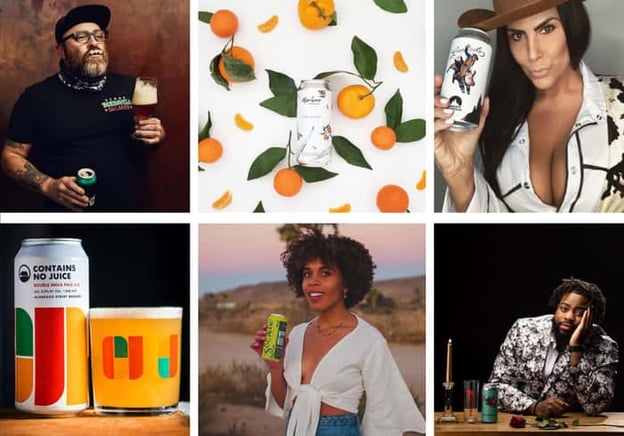
Influencers have a lot of—cough, cough—influence on Instagram, usually in a specific industry, and most likely they have a high number of followers and engagement.
Leveraging influencers can be useful to building your followers and engagement.
But, you should take time to consider who you choose to partner with. Many influencers will charge you a rate for their services, especially if they are very high profile.
Manning likes to invite people to the brewery who are in Two Roads’ local market. “Small-to-mid local influencers are more impactful than shelling out several hundred dollars to large influencers who might not have influence in your area.” says Manning.
She’ll send invitations to influencers with anywhere from 5k to 20k followers to come to different events at Two Roads’ taproom such as a release party. “They can share their experience and we can develop relationships with them that are more personal than a financial transaction,” sys Manning. “I recommend developing friendships instead of throwing cash at people, especially as a new brand.”
Which makes sense considering Instagram now prioritizes friendship and brand development over straight up likes.
The Final Word on Instagram
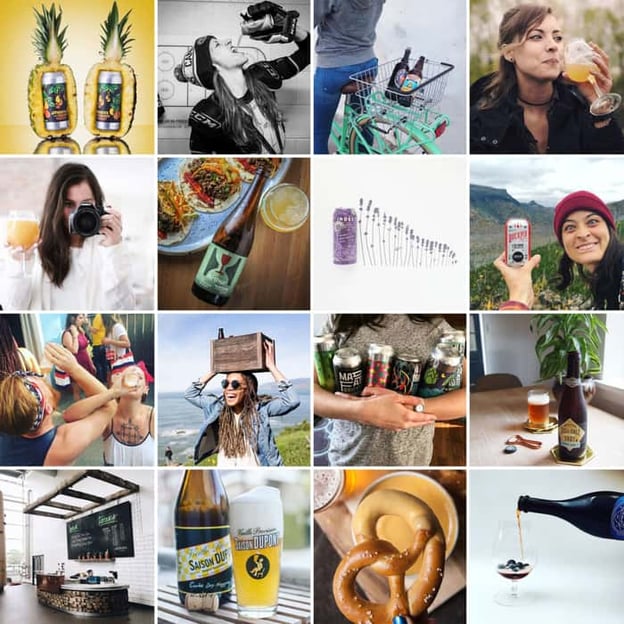
Bottom line: Instagram is a community just like your taproom. You need to show care and dedication to embracing your community and giving them what they want.
In fact, think of your Instagram page as almost a digital taproom. Just like your brick-and-mortar, your Instagram page is a place where people can come, see what you’re up to, chat, and generally connect with your brand.
Following these general guidelines will help you on your way to building the best brewery Instagram page possible.
Move Beyond Your Spreadsheets
Have control over your entire inventory and fulfillment processes from anywhere with Ollie. Even integrate with your existing inventory and accounting applications.
